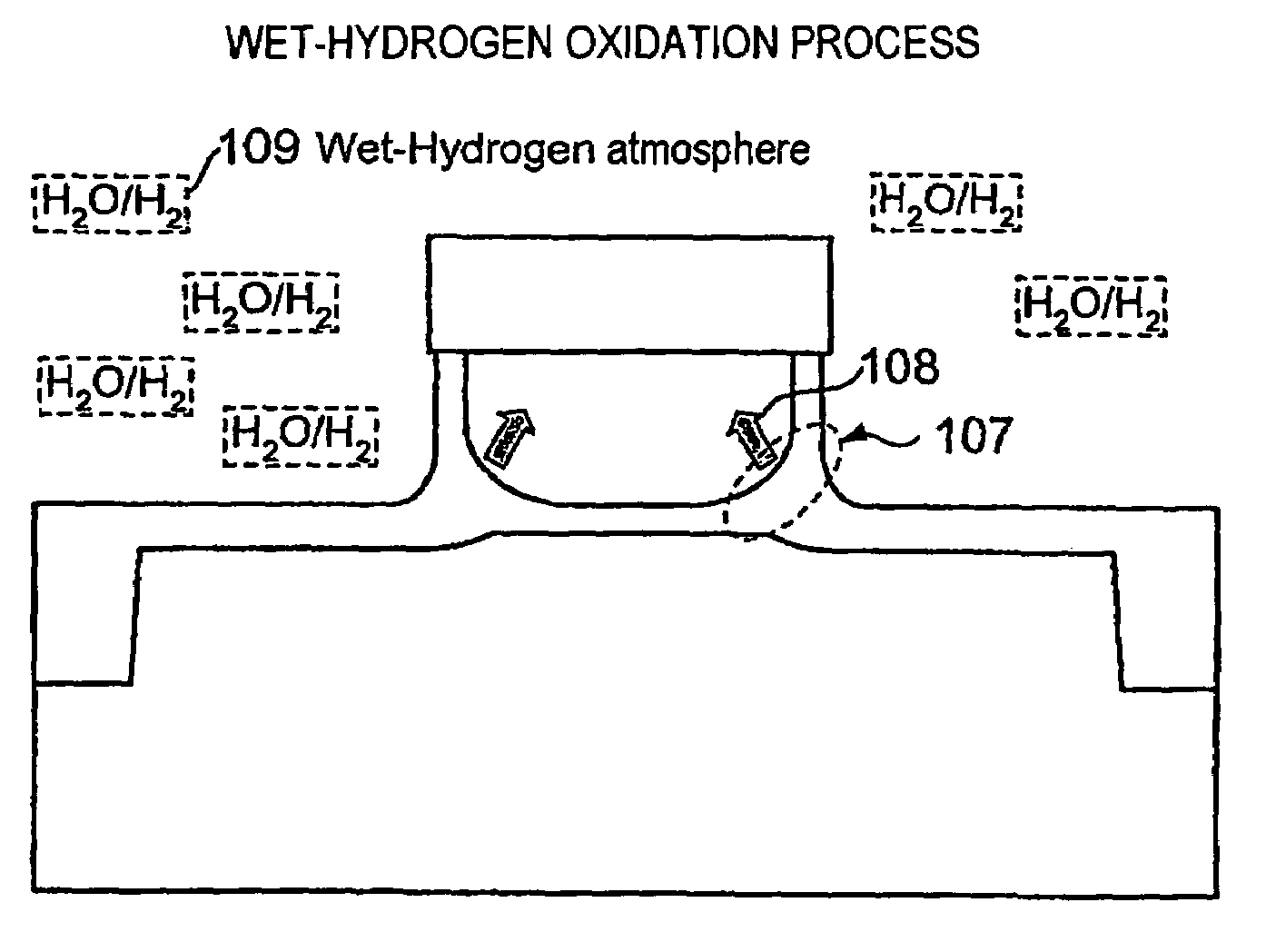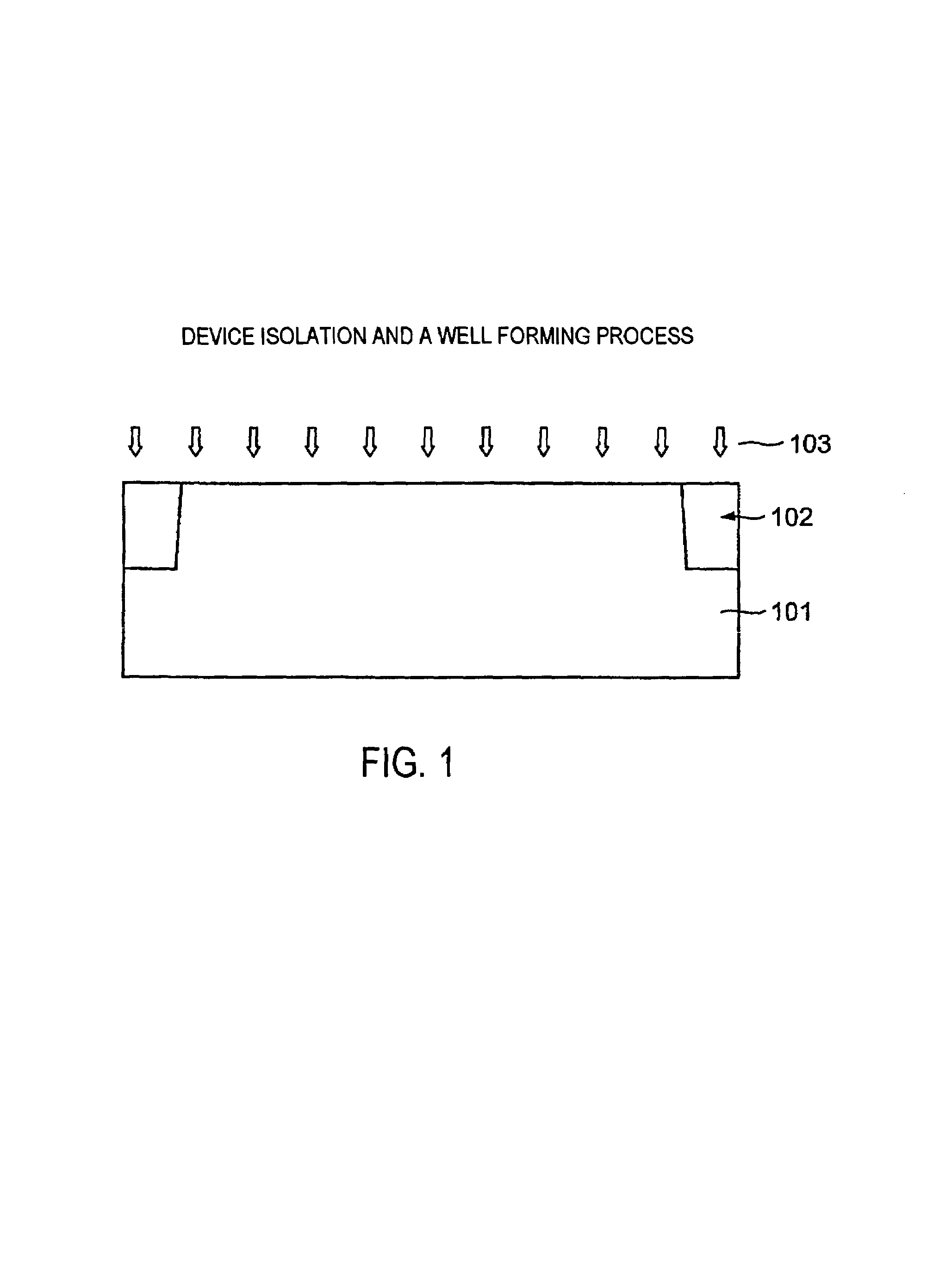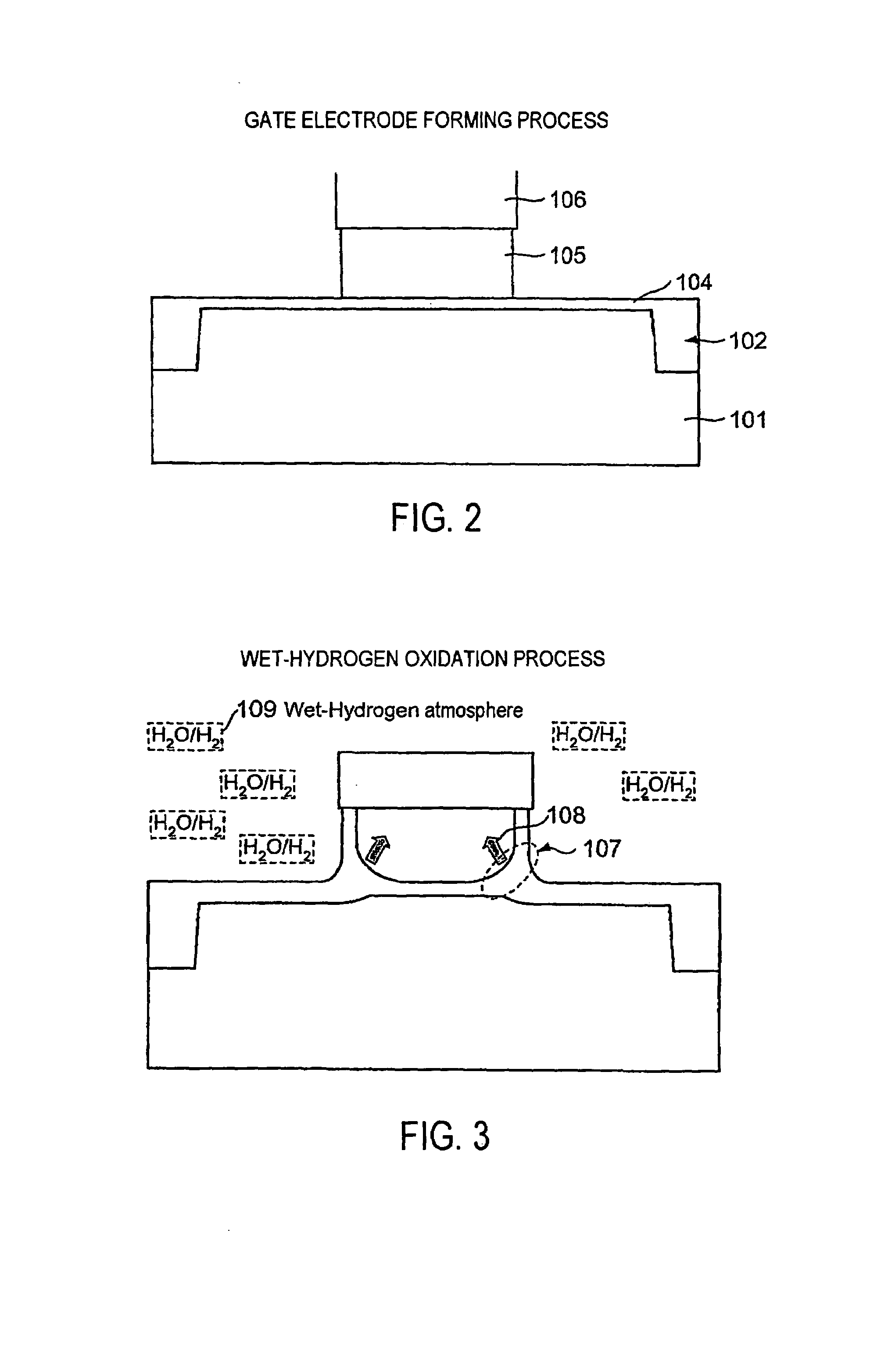Method of fabricating a semiconductor device having a decreased concentration of phosphorus impurities in polysilicon
a technology of phosphorus impurities and polysilicon, which is applied in the direction of semiconductor devices, basic electric elements, electrical equipment, etc., can solve the problems of reducing and affecting the miniaturization process. , to achieve the effect of greatly improving the adhesion strength between the polysilicon and the oxide film
- Summary
- Abstract
- Description
- Claims
- Application Information
AI Technical Summary
Benefits of technology
Problems solved by technology
Method used
Image
Examples
first embodiment
[0027]Now, description will be made of a semiconductor device according to a first embodiment of the present invention.
[0028]Referring to FIG. 1, a device isolation region 102 is formed in a silicon substrate 101. To provide device isolation, a shallow trench isolation (STI) to a depth of about 250 nm is generally used.
[0029]Then, impurities 103 are introduced into the silicon substrate 101 so as to form a well by ion implantation. When necessary, another ion implantation may be carried out in order to adjust a threshold of a MOS transistor. Such ion implantations are selectively carried out only in a desired region by photolithography.
[0030]Upon completion of such ion implantations, thermal treatment is performed at 900° C. for about 10 min.
[0031]Subsequently, a gate electrode is formed. Referring to FIG. 2, a gate oxide film 104 having a thickness of about 7 nm is formed as a gate insulating film by a thermal oxidation method. Then, a phosphorus-doped polysilicon 105 and tungsten ...
second embodiment
[0047]Subsequently, description will be made of a semiconductor device according to a second embodiment of the present invention.
[0048]As shown in FIG. 7, in a phosphorus concentration distribution of a phosphorus-doped polysilicon 105, a low concentration is set in an interface side of a gate oxide film 104, and a high concentration is set in an interface side of tungsten 106. Adhesion strength in this case is similar to that shown in FIG. 6.
[0049]The high concentration is set in the tungsten 106 side in order to reduce interfacial resistance between the phosphorus-doped polysilicon 105 and tungsten 106. Also in this case, sufficiently large adhesion strength can be obtained compared with the phosphorus concentration of 4E20 (1 / cm3) in the polysilicon 105 according to the existing art. The adhesion strength is lower than with a uniform concentration of 1E20 (1 / cm3) of the first embodiment. This occurs because the phosphorus is redistributed in wet-hydrogen oxidation in a way which ...
PUM
| Property | Measurement | Unit |
|---|---|---|
| temperature | aaaaa | aaaaa |
| thickness | aaaaa | aaaaa |
| depth | aaaaa | aaaaa |
Abstract
Description
Claims
Application Information
 Login to View More
Login to View More - R&D
- Intellectual Property
- Life Sciences
- Materials
- Tech Scout
- Unparalleled Data Quality
- Higher Quality Content
- 60% Fewer Hallucinations
Browse by: Latest US Patents, China's latest patents, Technical Efficacy Thesaurus, Application Domain, Technology Topic, Popular Technical Reports.
© 2025 PatSnap. All rights reserved.Legal|Privacy policy|Modern Slavery Act Transparency Statement|Sitemap|About US| Contact US: help@patsnap.com



